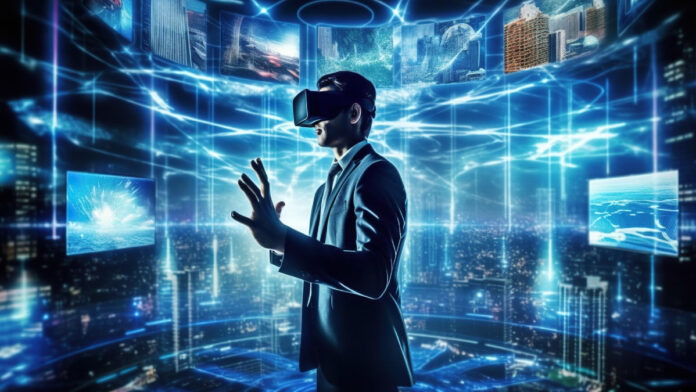The billboard and poster time is over. Out of home advertising has now evolved to become something totally different. Dear all, we are in the midst of a digital signage revolution, and you will never see advertising the same way again.
Yes, I’ve seen the static posters, the scrolling LED banners, and even the rudimentary digital screens playing a loop of video ads. While those were novel once, we’ve evolved, and so has the tech that’s transforming public spaces, elevating brand messages, and, most importantly, engaging consumers like never before.
It’s time to rethink what digital signage means for our spaces—be it retail, airports, or educational campuses. Forget the monotonous, electronic billboards of yesteryears. Today, digital signage is anything but static; it’s dynamic, intelligent, and—dare we at blog.kitcast.tv say—revolutionary. Let’s break down the tech trends that are giving digital signage its 21st-century mojo.
AI. Making Digital Signage Smart, Not Just Flashy
Artificial Intelligence (AI) and its sidekick Machine Learning are making digital signage a finely tuned instrument of personalized marketing. Imagine walking by a store’s digital sign that can gauge your age, mood, and preferences to show you ads you’d actually care about. It’s like having a concierge who knows you—effortlessly steering your attention towards products or services that tickle your fancy.
Also Read: AI Is Transforming the eCommerce Industry
Predictive Magic, Courtesy of Machine Learning
Machine learning isn’t just about real-time ad customization; it also gives us the power to forecast trends. Imagine being able to predict which ads will hit home runs with specific demographic segments, weeks or even months in advance. We’re talking next-level marketing strategy here, people.
Augmented Reality. A New Frontier in User Engagement
If AI is the brain, then Augmented Reality (AR) is the charismatic personality of modern digital signage. AR morphs customer interaction into an immersive adventure. You can now use your mobile phone or AR glasses to interact with virtual signs and thereby have your surrounding become a lively environment full of things that are not really there.
AR has the unique capability of blurring the lines between the digital and the real world. Imagine pointing your phone at a digital sign showing a perfume ad. Suddenly, your screen overlays the image with clickable buttons that offer a sample sent to your home or a 360-degree view of the perfume bottle. That’s not just interactive advertising; it’s a gamified shopping experience.
Retail’s Virtual Dressing Rooms
Think about standing in front of a digital mirror that lets you virtually try on outfits or accessories. It’s not just a time-saver but a social media sensation waiting to happen. Imagine the Instagram possibilities!
Navigating the Real World with AR Maps
In public spaces like airports and museums, traditional maps are dead; long live AR! Your smartphone or AR glasses can now guide you directly to your gate or exhibit, displaying contextual ads or information along the way.
EdTech Meets AR
In educational settings, AR can offer interactive 3D models or historical context during lectures. This is pedagogy 2.0, where students are not just informed but also entertained.
IoT. The Grand Network of Things
The Internet of Things might as well be the nervous system of this new era in digital signage. IoT technology allows a network of interconnected screens to be controlled and analyzed from a single hub. Consider a shopping mall where all the signages across hundreds of stores are coordinated. A fashion brand could potentially “follow” you with customized messages as you walk from one end of the mall to the other, turning casual browsing into guided shopping journeys.
The Internet of Things (IoT) lets digital signs connect with your smartphone and other devices, creating a smooth, connected experience.
Harvesting Data Through IoT
IoT isn’t just for gadget communication; it’s a treasure trove of analytics. Think foot traffic, dwell time, and other behavioral metrics that can shape content and placement strategy.
Big Data. Where Raw Data Becomes Pure Gold
Big Data analytics transform oceans of raw data into actionable insights. From real-time personalization to in-depth foot traffic analysis, Big Data enables a nuanced understanding of consumer behavior that was previously unthinkable.
Split-Testing in the Real World
Why guess when you can know? With Big Data, A/B testing isn’t confined to the realm of digital advertising. You can perform live tests to determine which content reels in more eyeballs.
The Visual Spectacle. UHD and OLED
As if smart wasn’t enough, digital signs are also becoming visually arresting. Ultra-High Definition and OLED technologies are turning digital displays into bona fide works of art.
The Cloud. Command Center for Digital Signage
Imagine controlling an army of digital signs from one dashboard. Cloud computing is making this a reality, streamlining operations in a way that was previously a pipe dream.
Also See: The Crucial Role and Benefits of KYC in a Digitized World
What’s Next? Even More Wow!
The future of signs is here, and it is more exciting than ever! We showcased our unique capabilities such as enhancing digital advertisements from a simple poster to an interactive, eye-catching digital display. Now, besides AI, AR, and Big Data, digital signs bring in new technology through real experiences instead of just showing advertisements.
The new world of advertising is full of screens that can read your mind, virtual try-ons, and maps that lead you directly to the product. Expect to be wowed by the amazing new signs that will make you say, “Wow!”
Discover Useful Free Tools Relevant to This Article
Below are some helpful, free web tools that can support your projects and tasks relevant to the ideas and tips shared in this article. These tools are designed to make your work easier and more efficient for free:


